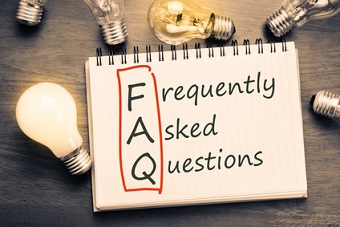3 Non-Pharmacological Treatments for Wound Infection
November 9, 2016
As I was commuting in to work a few Saturdays ago, I listened to The People’s Pharmacy on NPR. The topic was non-pharmacological treatment of infection, so being a wound care professional, I immediately started thinking of the ways I treat wound infections. In addition to oral, topical or IV antibiotics, as a PT there are modalities available to me to treat wound infections. The advantage of using these modalities is that treatments are effective across a broad spectrum of bacteria without the risk of resistance. Really! These treatments include ultrasound, electrical stimulation and laser or light-emitting diode (LED) therapy.
Electrical Stimulation Therapy for Wound Infection
Multiple theories have been developed as to why electrical stimulation is effective against bacteria including generation of bubbles disrupting the wound biofilm, increased membrane permeability and increased transport of antimicrobials through electro-osmosis among others. Knowing the effects of the positive and negative electrodes is important when applying stimulation to the wound. Macrophages are an example of cells attracted to the anode. Granulation tissue formation and decreased inflammation and infection within the wound bed are effects at the anode. CMS will reimburse for electrical stimulation after 30 days of standard wound care that does not show progress.
As a side note: Washington State University has developed an electrochemical scaffold which when used on a biofilm, nearly all microbes of the highly multi-drug resistant Acinetobacter baumannii were killed in 24 hours. The product is made of carbon fibers and when electrified, it reduces the dissolved oxygen in the biofilm to hydrogen peroxide, a known disinfectant (Medical News Today; Electrical Stimulation may offer alternative to antibiotics for wound treatment; Catherine Paddock PhD Wed 11 Nov 2015).
LED and Laser Therapy for Treating Wounds
LED and laser therapy have similar effects to each other. Melanin and hemoglobin absorb light best in the red and near infra-red wavelengths. They have been shown to increase the oxygen level in the wound and kill bacteria, fungi and viruses. Circulation, energy production and collagen synthesis are all enhanced. LED and laser therapy both decrease inflammatory cells, increase fibroblast proliferation, stimulate angiogenesis, promote granulation tissue formation and increase lymphatic system activity. It penetrates deep into the body – up to 4 cm – allowing treatment of deep infection as in diabetic foot ulcers, incisions and abscesses. Metal implants and pacemakers are not contraindications. Wounds can even be treated with bandages in place! However, Medicare has determined that there is sufficient evidence to determine that infrared treatments (LASER) are not reasonable and necessary, and therefore are not reimbursable. While it may not be reasonable and necessary, many providers and therapists are using LASER as an adjunct treatment. Because it is effective against multi-drug resistant organisms, this could be a cost-effective alternative to expensive designer antibiotics. Are you hearing this CMS?
Specific ultrasound devices have been developed for wound debridement. The process that removes biofilm or necrotic tissue also kills bacteria. Tissue cavitation not only removes non-viable substances, but also directly kills bacteria by disrupting their cell walls and biofilms. In particular, softer tissue or films virtually melt away painlessly before your eyes during the ultrasound treatment, increasing the efficacy of any antibiotics administered. This treatment is reimbursable by CMS.
Any of these treatments administered a few times by a skilled Wound Therapist can potentially reduce the bacterial burden of the patient’s wounds and shorten the healing time.
About the Author
Janet Wolfson is a wound care and lymphedema educator with ILWTI, and Lymphedema and Wound Care Coordinator at Health South of Ocala with over 30 years of field experience.
The views and opinions expressed in this content are solely those of the contributor, and do not represent the views of WoundSource, HMP Global, its affiliates, or subsidiary companies.











